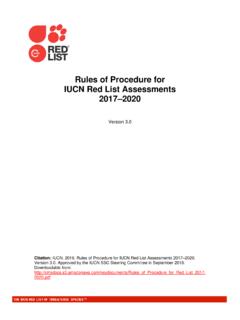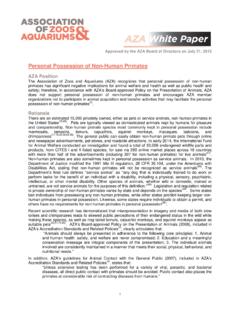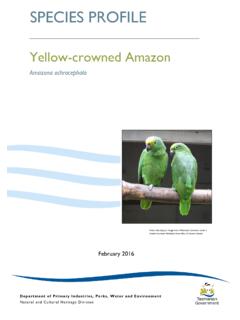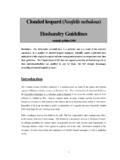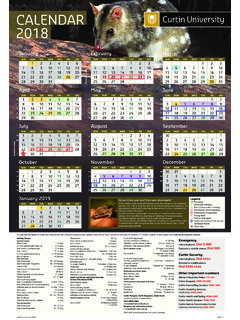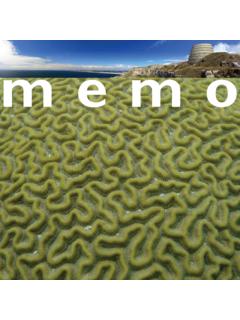Transcription of In Situ and Ex Situ Conservation of Endangered …
1 1 In Situ and Ex Situ Conservation of Endangered species . (IB Option G) European bison, Bison bonasus Discover Ltd. Timbers , Oxted Road, Godstone, Surrey. RH9 8AD Discover Ltd 2009 2In Situ and Ex Situ Conservation of Endangered species . Teacher s Notes This unit illustrates the principals behind Conservation of species and biodiversity with a series of visits to programmes which are being carried out in the locality. Lozere has a wealth of rare species Conservation programmes, partly because of the links with the Parc National des Cevennes but also because of its freely available open spaces. In Lozere, there are reserves for the wolf, Canis lupus and European bison, Bison bonasus; active species re-introduction programmes for European beaver, Castor fiber, capercaille, Tetrao tetrix, griffon vulture, Gyps fulvus, and black vulture, Aegypius monarchus; and the captive breeding centre for Przewalski horses, Equus przewalski poliakov.
2 Particularly worthwhile is a visit to the European bison visitor centre, in the north of Lozere. A guided tour around the reserve in a horse-drawn carriage, and a visit to the excellent museum detailing the history of the decline of the bison in Europe and the successful reintroduction programme costs EUR for students. Visits to the vulture and Przewalski horses programmes could be combined with a limestone grassland study as both are situated on the Causse Mejan. They could also be successfully combined with half a day white water rafting. The capercaille re-introduction case-studies can be taught during an evening, and combine well with the populations unit. Key Syllabus Areas Option G: Ecology and Conservation G4: Conservation of Biodiversity.
3 Discuss the role of active manage techniques in Conservation ; Discuss the advantages of in situ Conservation of Endangered species (terrestrial and aquatic nature reserves); Outline the use of ex situ Conservation measures, including captive breeding of animals, botanic gardens and seed banks. Bibliography and Useful Web Sites Foundation for the Preservation and Protection of the Przewalski Horse; Bison reserve on the Margeride, Lozere Introduction Population decline of the majority of threatened species is anthropogenic, ie. it has been caused by people. Population decline can be brought about directly, through the exploitation of a species , either for meat, fur, or a natural product such as musk or bone for use in traditional medicine. Alternatively, population decline can be caused indirectly, as a result of actual habitat destruction or disturbance through noise, pollution or raised light levels.
4 Unfortunately, some species have gone so far towards the point of extinction that their natural, spontaneous recovery back to self-sustaining numbers is negligible. This may be because their numbers have dropped to such an extent that stochastic factors those which are due to chance - play an increasingly important in determining breeding success. For example, environmental pressure such as a 3severe winter may be enough to remove the last of the breeding females from a population of a species which hibernates, or a poor fruiting year may remove the winter feeding reserves of a bird species . The International Union for the Conservation of Nature (IUCN), founded in 1948, brings together states, government agencies and a diverse range of non-governmental organisations (NGO s) in a unique world partnership over 800 members in all, spread across 125 countries.
5 As a union, the IUCN seeks to influence, encourage and assist societies throughout the world to conserve the integrity and diversity of nature and to ensure that any use of the world s natural resources is equitable and ecologically sustainable. The union has helped many member states to prepare National Conservation Strategies for species and habitats. Amongst many aspects of its programme, the IUCN co-ordinates the Red Data List the definitive list of the population status of plants and animals around the world, and co-ordinates species Recovery Programmes for Red Data species flagged up as being under severe threat. These programmes co-ordinate the efforts of NGO s and statutory bodies to facilitate the recovery of threatened species .
6 The IUCN has species Recovery Programmes for the Przewalski horse and European bison. The Parc National des Cevennes (PNC) has established its own species recovery programme for the European beaver, Castor fiber, capercaille, Tetrao tetrix, griffon vulture, Gyps fulvus, and black vulture, Aegypius monarchus. These programmes came about as the suitability of the PNC for these species was realised. All have a historical presence in the area, and have been lost either through hunting or miss-informed persecution, as in the case of the vultures. The PNC has already successfully re-established red and roe deer into the park. Roe deer were eliminated in the 15th century, red deer (and capercaille) in the 18th century.
7 Other animals are returning to the park spontaneously, including Tengmalm s owl and otter, attracted by the reserve which has become a wildlife refuge. Specific Infomation European bison. This case study provides an example of how ex-situ Conservation can be used to prevent species extinction. The bison at the reserve in the Margueride are bred to maintain a genetic reserve, with extra animals being sent to other collections, and possibly in the future for eventual release into the natural forest environment of the bison in Eastern Europe. European bison are classified by the IUCN as Endangered . It is the largest mammal on the continent, large bull bison standing over 6 feet tall and over 9 feet in length, weighing over 2,000 lbs. An adult bison can run at 60km/h, and will jump up to 2m high.
8 European bison are adapted to the forest environment, being slimmer and taller than their north American cousins. They also have smaller heads, and flatter backs, more suitable for pushing through thick forest cover. The European bison once roamed the great boreal forests that spread from the British Isles, through most of Europe and into Siberia. The population of bison in Europe had been contracting since the end of the last ice age, 12,000 years ago. The bison is a boreal species , adapted to life on the glacial fringe that extended across Europe at this time. As the climate gradually warmed, the range of this species contracted. Climate change, hunting, deforestation and habitat destruction, with a gradual change of its native habitat of coniferous woodland to agricultural land bought about the gradual decline of this species .
9 By 1812, records indicated that only 3-500 remained in the wild. The last European bison surviving in the wild was shot in the 4 Bialowieza forests of Poland in 1919. The only animals that remained were in zoos and private collections in Europe and around the world. In 1923, at an International Congress for the protection of nature in Paris, a Polish Zoologist, Yan Sztolcman, proposed that research began with the aim of reintroducing the European bison into the wild. By 1923, only 54 European bison remained in the world. In 1932, a registry of European bison was drawn up, which indicated that only 40 European bison of pure blood remained (the remainder were American buffalo hybrids). In 1929, a small herd of European bison was reconstructed in Poland, using only three females named Biscaya, Biserta and Plish who were brought in from zoos in Sweden and Germany.
10 The Second World War slowed the project but eventually, in 1952, two animals were finally released into the wild, in the Bialowieza forest. The first birth in the wild was in 1957, and following subsequent releases which enriched the gene pool of the wild population, by 1959, 28 animals were living in freedom in these forests. By 1999, 3-4,000 animals lived in the wild. By contrast, there are 500, 000 American buffalo in the wild. The European bison provides an excellent case study of the problems of small founder populations. The species now has serious genetic abnormalities as a result of the use of only three females to give rise to the present population. Five percent of the 250 bison in Belarus are affected by balanoposthitis, a disease which attacks the male genitals.

